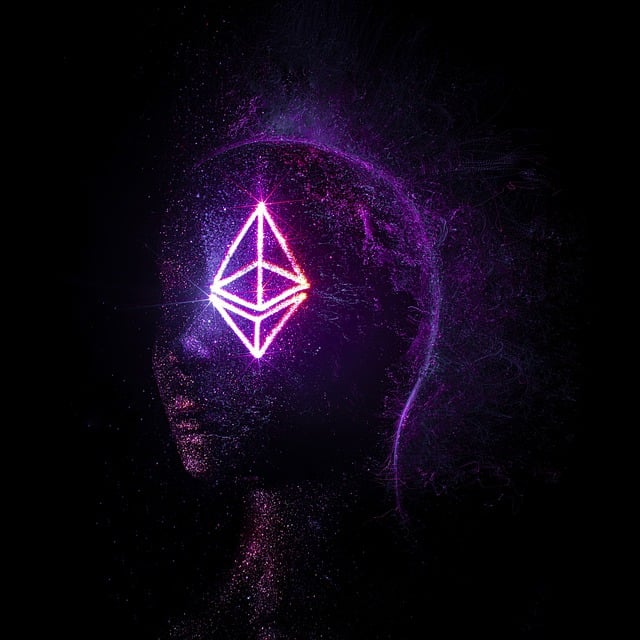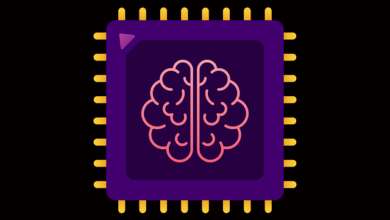Google’s Contribution to Accessibility: Making Technology Inclusive

Have you ever stopped to think about how technology has transformed our lives? From smartphones to voice assistants, technology is all around us. But what about those individuals who face challenges in accessing these technological advancements? That’s where Google comes in. With its unwavering commitment to accessibility, Google is making technology inclusive and bridging the gap for people with disabilities.
One of Google’s significant contributions to accessibility is through the development of various assistive technologies. Take, for instance, TalkBack, an Android feature that helps individuals with visual impairments navigate their devices using spoken feedback. By enabling gestures and vocalization, TalkBack empowers visually impaired users to interact with their smartphones effortlessly.
In addition to assistive technologies, Google has made significant strides in improving web accessibility. The Web Content Accessibility Guidelines (WCAG) outline the standards for creating accessible websites. Google actively promotes and encourages website owners to adhere to these guidelines, ensuring that their content is accessible to all users, regardless of their abilities.
Google’s dedication to accessibility extends beyond software and web development. The company has also taken steps to make physical spaces more inclusive. Through initiatives like “Accessible Maps,” Google provides detailed information regarding wheelchair accessibility and other features that cater to the needs of people with mobility impairments. This enables individuals to plan their routes and navigate public spaces confidently.
Furthermore, Google is fostering inclusivity through its innovative products. For example, Live Caption, a feature available on select Android devices, automatically generates captions for videos, podcasts, and audio messages in real-time. This breakthrough technology revolutionizes the way individuals with hearing impairments engage with multimedia content, offering them equal access to information and entertainment.
It’s important to recognize that accessibility benefits not only individuals with disabilities but society as a whole. When technology is inclusive, it opens doors to education, employment, and social interaction for everyone. Google understands this and continues to push the boundaries of accessibility, striving for a future where technology is truly inclusive and accessible to all.
Google’s commitment to accessibility is commendable. Through assistive technologies, web accessibility initiatives, improvements in physical spaces, and innovative products, Google is instrumental in making technology more inclusive. By focusing on accessibility, Google ensures that individuals with disabilities can fully engage with and benefit from the digital world. Let’s applaud Google for its efforts and continue working towards a future where technology knows no barriers.
Breaking Barriers: How Google’s Accessibility Initiatives Are Revolutionizing Inclusive Technology
Are you tired of technology that fails to meet the needs of all users? Look no further! Google’s accessibility initiatives are here to revolutionize inclusive technology, breaking down barriers and ensuring equal opportunities for everyone.
When it comes to accessibility, Google has taken significant strides to make technology more inclusive and user-friendly. Through innovative features and partnerships, they are empowering individuals with disabilities to navigate the world of digital information effortlessly.
One of Google’s groundbreaking initiatives is their commitment to building accessible products. They incorporate universal design principles into their hardware and software, making it easier for people with disabilities to access and interact with technology. From smartphones to smart speakers, Google’s devices are equipped with advanced accessibility features like screen readers, voice commands, and haptic feedback, enabling individuals with visual or motor impairments to use them effectively.
Another aspect where Google is fostering inclusive technology is through their efforts in web accessibility. They promote the development of websites and applications that comply with WCAG (Web Content Accessibility Guidelines) standards. By encouraging developers to prioritize accessibility, Google ensures that web content is perceivable, operable, and understandable by all users, regardless of their abilities.
Google also recognizes the power of AI and machine learning in enhancing accessibility. Through projects like “Lookout,” an app that assists visually impaired users in identifying objects and reading text aloud, Google demonstrates how cutting-edge technologies can break barriers and provide a more inclusive experience.
To further their mission of inclusivity, Google partners with organizations and advocates in the accessibility community. By collaborating with experts and listening to user feedback, they gain valuable insights that help shape their accessibility features and product development strategies. This collaborative approach ensures that Google continues to address the real needs of people with disabilities.
Google’s accessibility initiatives are revolutionizing inclusive technology by breaking down barriers and providing equal access to all. Their commitment to building accessible products, promoting web accessibility, harnessing AI and machine learning, and fostering partnerships with the accessibility community exemplify their dedication to creating a more inclusive digital world. With Google leading the way, technology is becoming an empowering tool for everyone, regardless of their abilities. So, let’s embrace this revolution and work towards a future where no one is left behind!
From Vision to Reality: Google’s Pioneering Efforts in Making Technology Accessible for All
In the fast-paced world of technology, accessibility has become a key focus for companies striving to make their innovations available to everyone, regardless of their abilities. Among these companies, Google stands out as a pioneer in its relentless pursuit of making technology accessible for all. Through innovative solutions and unwavering commitment, Google has transformed its vision into reality, revolutionizing the way we interact with technology.
Google’s journey towards accessibility began with a simple yet powerful question: How can we ensure that technology is inclusive and accessible to all individuals, regardless of disabilities or limitations? This question served as the guiding principle for Google’s groundbreaking initiatives aimed at breaking down barriers and enabling equal access to information and opportunities.
One of Google’s remarkable accomplishments in this domain is the development of Android Accessibility Suite. This suite of accessibility services empowers millions of users with disabilities by providing features such as screen readers, magnification, and voice control, making smartphones and tablets more accessible and user-friendly. By incorporating these tools directly into its operating system, Google has paved the way for a more inclusive digital experience.

Another notable stride made by Google is evident through its commitment to accessible web design. With initiatives like “Accessible Search,” Google ensures that users with impairments can easily navigate and access information online. By prioritizing websites that adhere to accessibility standards, Google encourages developers and content creators to make their platforms more inclusive, fostering a diverse online ecosystem.
Moreover, Google has actively invested in cutting-edge technologies like machine learning and artificial intelligence (AI) to further enhance accessibility. Through projects like Live Transcribe and Lookout, Google utilizes AI algorithms to provide real-time transcription and object recognition capabilities, empowering individuals with hearing or visual impairments to participate fully in conversations and perceive their surroundings better.

By spearheading these advancements in accessibility, Google has not only improved the lives of countless individuals but has also set a precedent for the entire tech industry. The company’s unwavering dedication to ensuring equal access to technology highlights its commitment to inclusivity and social responsibility.
Google’s pioneering efforts in making technology accessible for all have transformed its visionary ideas into impactful realities. Through initiatives like Android Accessibility Suite, prioritizing accessible web design, and harnessing the power of AI, Google continues to break down barriers and empower individuals with disabilities. By championing accessibility, Google sets an inspiring example for the tech industry, reminding us that innovation is most impactful when it benefits everyone, leaving no one behind.
Empowering Individuals: Unveiling Google’s Innovative Tools for Enhancing Accessibility

Are you ready to explore the incredible world of innovation brought to us by Google? In this article, we will uncover some awe-inspiring tools designed by Google that empower individuals and enhance accessibility. Prepare to be amazed as we delve into the ways these innovative solutions are revolutionizing the digital landscape.
Let’s start our journey with “Live Transcribe.” Have you ever wondered how someone with hearing impairments can fully engage in conversations? Well, Google has developed an ingenious tool that transcribes spoken words in real-time. Live Transcribe converts speech into text, allowing individuals with hearing difficulties to follow conversations effortlessly. It’s like having a personal translator right at your fingertips!
Moving on, we have “Lookout,” a tool specifically designed for people with visual impairments. Imagine being able to explore the world around you through the power of artificial intelligence. Lookout uses your smartphone camera to identify objects, read labels, and even recognize faces. With this remarkable tool, visually impaired individuals gain independence and a new level of accessibility.
Next up is “Action Blocks.” Sometimes technology can be overwhelming, but Google has come up with a solution to simplify daily tasks for individuals with cognitive impairments. Action Blocks allows users to create customized shortcuts for frequent actions on their Android devices. From making a phone call to sending a text message, these personalized blocks make navigating smartphones easier and more intuitive.
Now, let’s talk about “Eyes-Free Shell.” For those with motor disabilities, interacting with touchscreens can be challenging. That’s where Eyes-Free Shell comes in. This innovative tool provides a simplified user interface and voice-guided commands, enabling individuals to operate their devices without relying on manual dexterity. It’s like having your own virtual assistant, always ready to assist you.
Last but not least, we have “Project Euphonia.” Did you know that even individuals with speech impairments can benefit from Google’s groundbreaking technology? Project Euphonia leverages advanced speech recognition algorithms to improve the accuracy of transcriptions for people with atypical speech patterns. By training their models on diverse speech samples, Google is breaking down barriers and amplifying voices that were once unheard.
Google’s commitment to accessibility shines through its innovative tools. From Live Transcribe and Lookout to Action Blocks, Eyes-Free Shell, and Project Euphonia, these groundbreaking solutions empower individuals and foster inclusivity in our digital world. The possibilities are endless when technology merges with compassion, creating a more accessible future for everyone. Get ready to embrace a new era of empowerment!
Beyond Boundaries: How Google’s Accessibility Innovations are Transforming Lives
In today’s digital age, accessibility is no longer a luxury; it’s a necessity. People with disabilities deserve equal opportunities to access and benefit from technology. Recognizing this need, Google has been at the forefront of creating innovative solutions that break down barriers and empower individuals worldwide. Through their relentless commitment to accessibility, Google is transforming lives and opening up a world of possibilities.
Google’s accessibility initiatives have revolutionized the way people interact with technology. With a focus on inclusivity, they have developed groundbreaking tools and features that cater to individuals with diverse abilities. Their goal is to ensure that everyone, regardless of disability, can fully engage with the digital world.
One of Google’s remarkable innovations is the TalkBack screen reader for Android devices. This feature enables individuals with visual impairments to navigate their smartphones effortlessly. By providing spoken feedback and audible descriptions of on-screen elements, TalkBack empowers users to send messages, browse the internet, and enjoy a range of applications independently.
Moreover, Google’s Live Caption brings the power of captions to any media playing on Android devices. This feature benefits individuals who are deaf or hard of hearing, making video content more accessible. From watching videos online to attending virtual meetings, Live Caption ensures that important information is never missed, enhancing communication and fostering inclusion.
Another groundbreaking advancement by Google is Project Euphonia. This initiative harnesses the power of AI to improve voice recognition software for those with speech impairments. By training algorithms to understand unique speech patterns, individuals who struggle with verbal communication can express themselves more effectively, bridging the gap between them and the rest of the world.
Google’s commitment to accessibility extends beyond their own products. They actively collaborate with developers, organizations, and communities to promote inclusive design practices. By providing resources, guidelines, and support, Google empowers others to create accessible experiences and technologies that benefit individuals with disabilities.
Google’s accessibility innovations are reshaping the lives of countless individuals. Through their commitment to inclusivity and groundbreaking technologies like TalkBack, Live Caption, and Project Euphonia, they are breaking down barriers and empowering people with disabilities worldwide. By promoting accessibility as a fundamental aspect of technology, Google is transforming lives and fostering a more equitable digital future for all.




